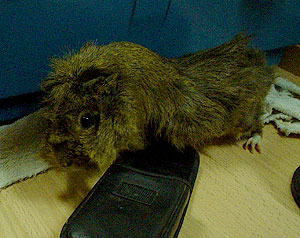
Have you ever had a pet in your life? You may be part of a minority group who answered NO, but there is still a good chance you have been involved with pets: your neighbour’s cat, your best friend’s dog, your cousin’s fish. Pets are everywhere: it is estimated that 65% of Australian households have a pet and a similar estimate applies in the United States. But why are we talking about pets?
Well, the answer is simple! People devote their time (all those walks along the beach), their hard-earned income (an estimated $20,000 for a pet which lives 10 years), and their emotional energy to their pets. Many view their pets as life companions, nurture and develop a relationship with them, even though they cannot carry out a conversation, tell an interesting story, or even help with cleaning the house. At the emotional level, pets are capable of providing unprecedented support. They can be your best friend.
The Primordial Bond
We need company. Human beings are social and highly-emotional therefore feel the necessity to share their lives with others. We are always looking for fulfilment through recognition, responsibility and attachment – and pets are able to provide that with great efficiency. Having a pet incurs being responsible for a living being, being attached to another animal which seemingly also presents emotion-induced behaviours and being recognised. And the best thing is that there aren’t any conflicts in food tastes, life goals or the TV channel that should be on!
Dogs, cats and other pets are also able to establish a harmonic relationship with highly introvert, non-sociable individuals. Some people suffer with the inability to relate to others, to express themselves or to build any rapport with other human beings. Pets are more flexible and are satisfied with anyone that cares about them. Do pets share human qualities or emotions? There are theories about instinctive behaviour, and theories about learning and relating. However, from the human perspective, it does not really matter. We love our pets just as they are.
We produce all kinds of assumptions about their personality (there is some paradox in affirming that animals actually have one), their needs (other than physiological), their perspectives of the world, and so on. We are happy to simply make those assumptions and believe they are the truth, and as long as the animal seems happy – then they ought to be true. At the emotional level, our personification of pet animals is so obvious that we name our dogs and cats Max, Jack, Oscar and Bella (believe it or not, the most popular names).
Learning and Socialising
Some say pets are good teachers. In fact, they can be. Pets allow humans to learn more about themselves. Why? Because we have to create various assumptions about them as they neither communicate effectively (some body language won’t do the whole job), nor have the same behavioural patterns. In this process, we are able to better understand our mindset towards the world: it is the same effect that a kid with a toy would experience, but on a larger scale.
Furthermore, we tend to evolve emotionally when constantly dealing with pets, even if they are not ours. They provide us with moments of joy and laughter, sadness and anger, and many other emotional states which will stimulate the awareness of our individual responses. Particularly when owned by children or young people, pets induce individuals to increasingly learn about important life concepts such as responsibility, accountability, loyalty, empathy and unconditional love. Such qualities are essential to a child’s healthy development.
Pet Therapy
Well, so far we’ve learned that pets can be teachers, mentors, friends, companions. How about therapists? This field is actually one of the most researched fields in the last decade, with psychologists and behavioural scientists conducting several research programs in clinical settings such as hospitals and nursing homes. It has been found that pets can vastly help patients by providing them with emotional support and motivation. It has been scientifically proven that laughter is a great supporting therapy: pets bring laughter to patients in good, moderate and severe conditions.
In animal-assisted therapy programs, a companion animal will visit patients with a trained caregiver (and the animal is also carefully screened for safety purposes). This process helps to improve both patient and staff morale towards the treatment outcomes. The animal becomes the centre of the attention, which helps release much of the stress related with the treatment. It is a win-win situation.
Good Medicine
Research has shown that animal companionship increases survival rates in groups of patients who have suffered cardiac arrest and it also improves the quality of life in many families. Animals require close care, and for that purpose, it requires physical and mental exercise.
Having a pet means walking more, grooming the animal, exercising problem-solving skills, planning, managing, and many other related activities. Inevitably – your neighbour’s cat, your best friend’s dog, your cousin’s fish or your own animal will remove you from your shell, and potentially turn you into a happier, healthier and more fulfilled person – and with no strings attached!
